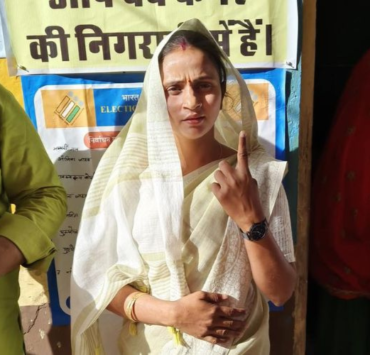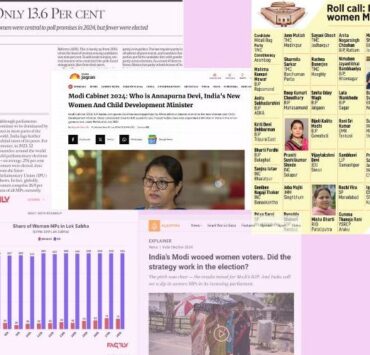
By Ammu Joseph
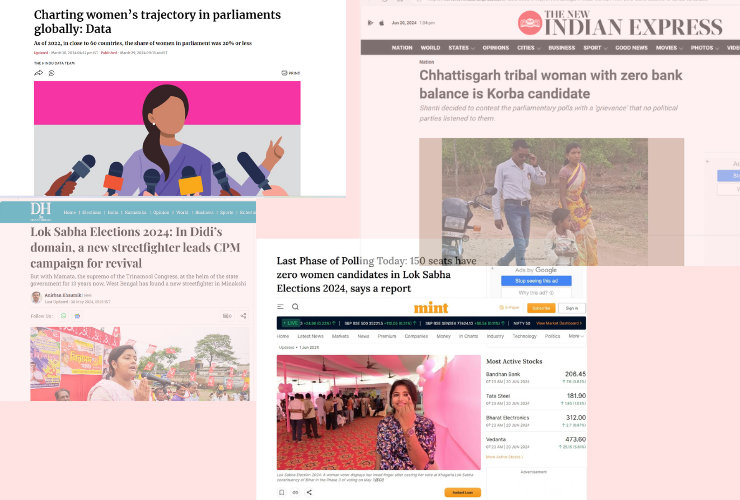
In the lead-up to the 2024 general elections in India, The Hindu’s data team had charted the trajectory of women’s representation in parliaments across the world. According to them, even though women’s representation in political spheres improved in the latter half of the 20th Century, progress has been uneven. Despite substantial gains in several nations, women continue to constitute a minority in most parliamentary bodies and are still rarely seen in top positions of political leadership. As of 2022, in a large number of countries (close to 60), the share of women in parliament is 20 per cent or less. In three countries there are no women at all in legislative bodies.
In the recently concluded national elections, 74 women were elected to the Lok Sabha, four fewer than in 2019. They make up just 13.63 per cent of the 543-seat Lower House, much less than the 33 per cent of seats that are to be reserved for women when the Constitution (106th Amendment) Act, 2023 – better known as the Women’s Reservation Act, 2023 – comes into force some years down the line, once the long-postponed decennial census and subsequent “delimitation” of seats are completed.
It is a sobering fact that before the newly renamed “Nari Shakti Vandan Adhiniyam”, 2023 Bill finally became an Act last year, its predecessors – collectively known as the Women’s Reservation Bill – had a long and tumultuous history, spanning nearly three decades, after being first introduced in Parliament in 1996. And that, despite the near-unanimous support for the passage of the law in both houses of parliament last year, this was not reflected in parties’ selection of candidates for the polls this year, with women making up only about 10 per cent of all candidates across the board. According to a report, as many as 150 Lok Sabha constituencies had zero women candidates; in other words, about 27.6 percent of the 543 Lok Sabha seats had no women in the fray.
The exceptions to the gender-unfriendly rule for candidates among political parties were the Biju Janata Dal (BJD), the Rashtriya Janata Dal (RJD) and the Trinamool Congress (TMC), whose record was 33 per cent, 29 percent and 28.5 per cent respectively. The 67 per cent attributed to the National People’s Party (NPP) by PRS Legislative Research appears a bit misleading, considering that the party fielded three candidates altogether, among them two women. It is worth noting that of the 12 women fielded by the TMC, 11 won – a success rate of over 91 per cent.
Much of this useful information made it to the news media towards the end of the election season thanks mainly, it appears, to reports compiled by organisations such as PRS Legislative Research and Quantum Hub (TQH).
The Bangalore editions of five English newspapers carried few reports throughout May on the number of female candidates standing for election. The exceptions were a report on the number of women in the fray in Karnataka (The Times of India, TOI) and two reports on the poor representation of women among candidates for the Lok Sabha polls in Punjab (TOI), with one pointing out that Haryana’s record was better (The New Indian Express, TNIE).
As expected, prominent women candidates did receive a fair amount of coverage. Besides well-known names like Priyanka Gandhi and Sonia Gandhi, Mamata Banerjee and Mahua Moitra, women from or connected to filmdom, such as Kangana Ranaut and Geeta Shivarajkumar, were in focus. The Ranaut slapgate incident took place after the election results were announced in June – outside the time period covered in this review.
Others who featured in the media in May were generally wives, daughters or other relatives of veteran political leaders and often referred to as such (“Lalu’s daughters”, “YSR’s daughter”, “wife of jailed former Jharkhand Chief Minister Hemant Soren”, and so on). In some constituencies, where female candidates faced off against each other, they got some coverage – not only “the Pawars” (Supriya Sule and Sunetra Pawar) in Maharashtra but also Jyotsna Charandas Mahant and Saroj Pandey in Chhattisgarh, Joba Manjhi and Geeta Koda in Jharkhand, and Prabha Mallikarjun and Gayatri Siddeshwar in Karnataka. Sule is, of course, a veteran herself, having been first elected to the Rajya Sabha in 2006 and then to the Lok Sabha for three consecutive terms (2009, 2014 and 2019), before winning again in 2024. There was barely any mention of the leader of the Bahujan Samaj Party (BSP), Mayawati – except for an opinion piece by academic Badri Narayan, headlined “Behenji’s fightback: Mayawati tries to retrieve lost relevance in national politics” (TOI).
Notable exceptions to the prominence rule were a few reports on women fighting elections against the odds. For example, TNIE carried a report on Shanti Bai Marawi, a tribal woman in Chhattisgarh who decided to contest as an independent for the Korba Lok Sabha seat despite having no money in her bank account. The Hindu highlighted independent candidate Hena Shahab in Bihar, whose entry into the scene had reportedly “complicated the field” for the RJD since she was the wife of the late “don-turned-politician”, Mohammad Shahabuddin, earlier considered close to RJD chief Lalu Prasad Yadav. An interesting report in Deccan Herald featured Minakshi Mukhopadhyay, “a new streetfighter” leading the CPI(M) campaign in “Didi’s domain”.
Female voters received a fair amount of media attention this time – and not just in the form of the customary photographs of women queueing up to vote in different parts of the country, preferably in colourful or “exotic” attire. This may be due to the fact that there is far more focus on women voters now, in view of their increasing participation in elections, even outnumbering male voters in some constituencies. Each phase of the long drawn out 2024 elections generated news reports on the participation of women as voters – in particular states as well as at the national level.
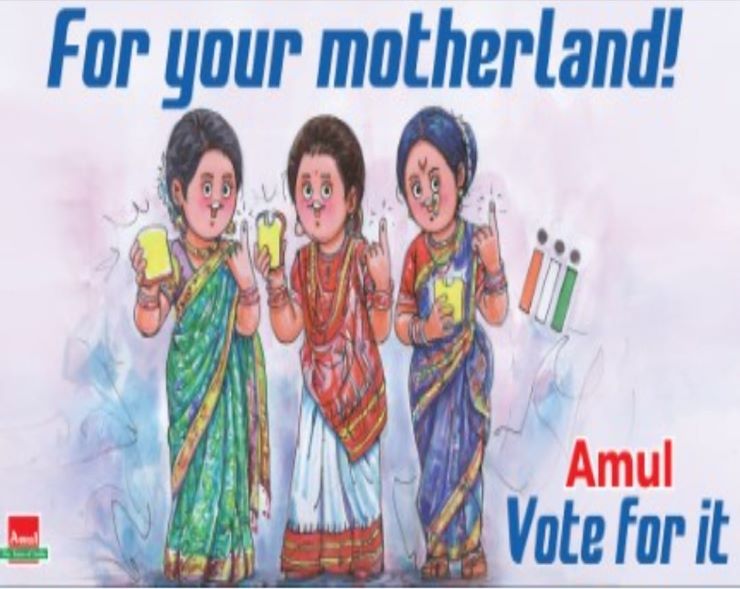
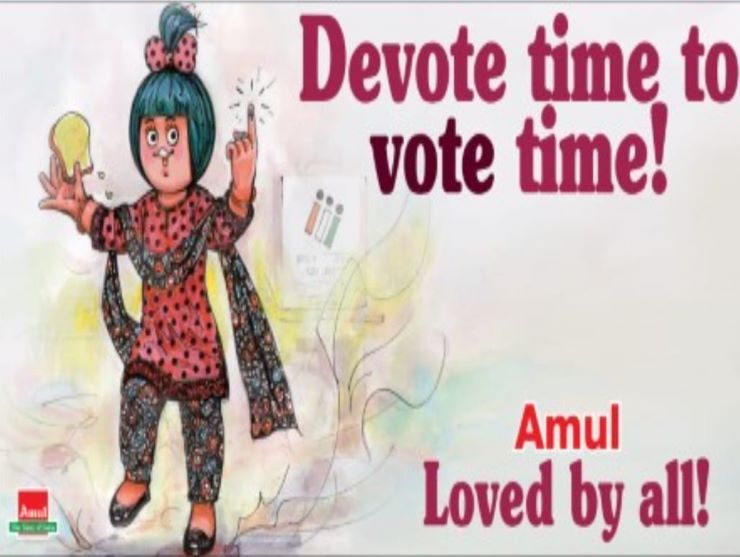
The fact that more political parties seem to have woken up to the power of the female vote and are exploring ways to “win over women voters” may well have contributed to the increased media interest in women voters, whose number has been pegged at 471 million in 2024. Several reports focused on the courting of the female voter by various parties in different states. Although the turnout of male and female voters in 2024 was almost equal at the national level (65.80 and 65.78 per cent respectively), women beat men by turning up in larger numbers in 19 of the 36 states and Union Territories (UTs).
The recent election season also threw up some outrageous cases of sexual abuse and assault of women, ranging from the horrific allegations against MP Prajwal Revanna of the Janata Dal (Secular) in Karnataka to accusations and counter-accusations involving TMC leaders in Sandeshkhali in West Bengal. Although the BJP ultimately dropped Brij Bhushan Saran Singh, former chief of the Wrestling Federation of India, who is facing criminal charges of sexually harassing women wrestlers, as its Lok Sabha candidate for the Kaiserganj seat in Uttar Pradesh, the party picked his son, Karan Bhushan Singh as the candidate to replace him – and he won. There was also the case filed by Swati Maliwal, former chairperson of the Delhi Commission for Women and currently a Rajya Sabha member representing the Aam Aadmi Party (AAP), in mid-May, alleging assault by an aide of AAP leader and Chief Minister of Delhi Arvind Kejriwal when she had gone to the CM’s official residence to meet him.
It is not surprising that news around these controversies occupied considerable media space, with the Revanna scandal receiving the most attention in the Bangalore papers. As expected, a great deal of this attention focused on the political row over who was responsible for circulating the notorious “sex videos”, when the important question regarding the videos (besides the fact that they exist at all) was who was irresponsible enough to make them public without ensuring that the women involved could not be identified by all and sundry, especially in a small town like Hassan. However, the massive protest by women’s organisations and others in Hassan on the day Prajwal Revanna was expected back in India after hiding out overseas for over a month, was widely covered by newspapers.
It is important to note that several journalists who did travel to and spend time in Hassan, hoping to listen to and tell the survivors’ side of the story, not only found that many of women were not accessible but also, separately, made conscious decisions not to pursue them and make the trauma many of them were already going through even worse.
The politicisation of the tragic deaths of two young women, Neha Hiremath and Anjali Ambiger, within a month of each other in the Hubballi-Dharwad area of Karnataka, resulted in more media coverage than most such murders usually generate. They were both stabbed to death in separate incidents by men who could not deal with rejection. The fact that the first murder – of the daughter of a municipal council member – was committed by a Muslim man made it easy to label it as a case of would-be “love jihad”. That angle was not available for the second murder but it was politically convenient to point fingers at the state government.
The TOI published two editorials related to some of these controversies. The first – headlined “Many Revannas” – highlighted the fact that the scandal involving the JDS chief’s grandson is yet another example of how the system coddles the powerful. The second, titled “Don’t Play This Game”, commented on “poll rhetoric that weaponises women victims”. Another article in the same paper, headlined “Sex and the Indian politician”, went into the background of how several scandals such as the Revanna one have played out in the past, suggesting that they rarely hurt the politicians involved.
Another gender-related aspect of election coverage emerged from campaign rhetoric about making Pakistan “wear bangles”, comments about opposition parties doing “mujra” for votes and, of course, allegations that bringing back “triple talaq” was on the opposition’s “to-do list”. The less said about such comments the better.
Ammu Joseph is an independent journalist and author based in Bangalore.



